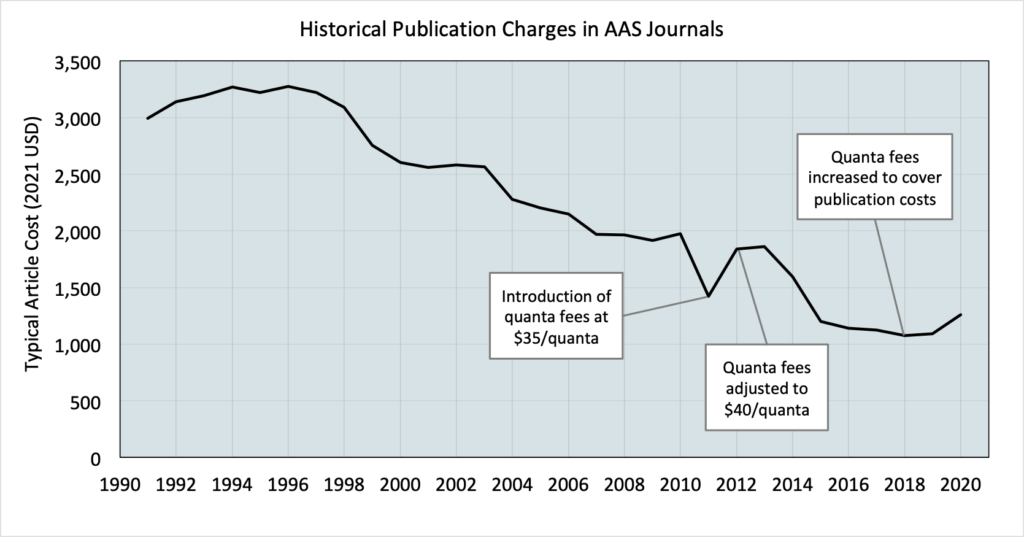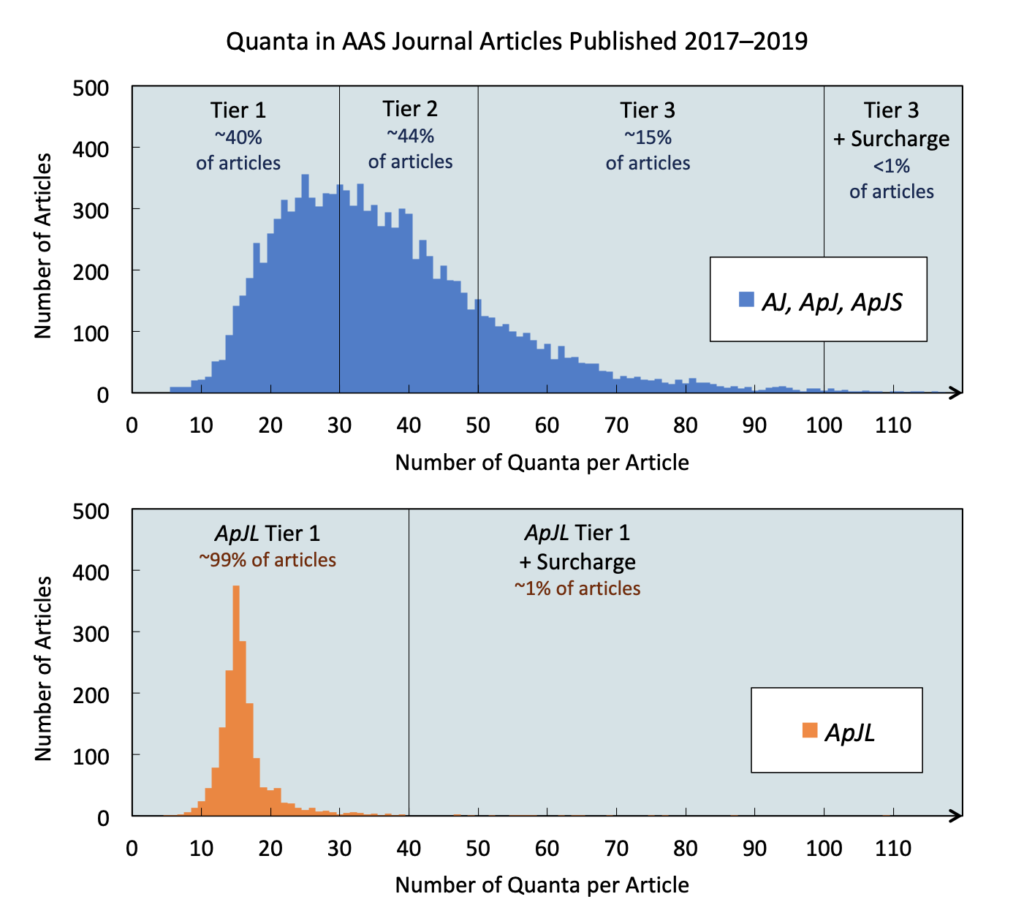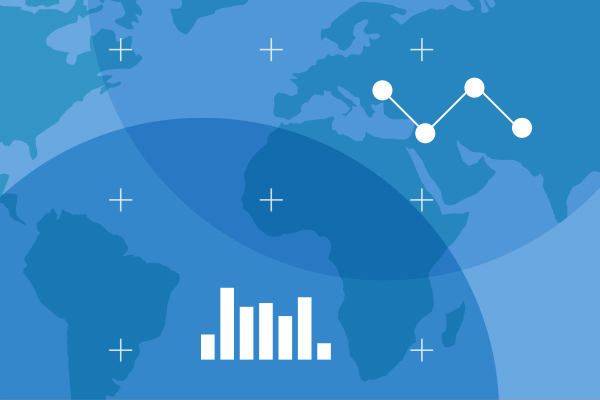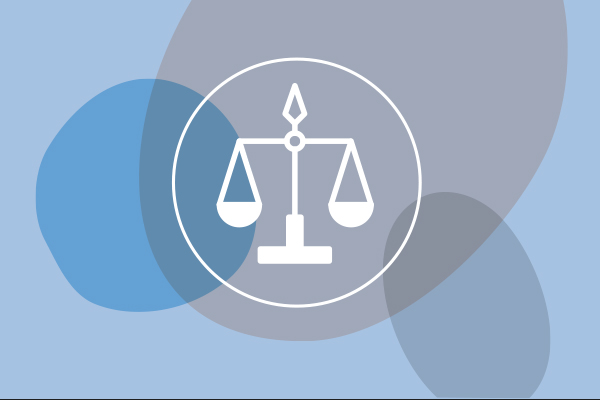The AAS calculates article publication charges using an approach that counts “digital quanta,” units of information in digital form that the author supplies. Digital quanta can include words, figures, tables, data components, and figures within a figure set.
As of 1 January 2025, article publication charges will be assessed to authors according to the tiered rate structure below, with the tiers set by the number of quanta in the publication. The following table applies to AJ, ApJ, ApJS, and ApJL; the PSJ will maintain its own, separate rate structure.
Based on submissions to AAS journals in 2017–2019, we expect that more than 80% of ApJ, ApJS, and AJ submissions will fall into the lowest two tiers. We expect almost all ApJL submissions to fall into the first ApJL tier.
No. The AAS believes that identifying errors in published research and correcting them through the publication of errata is an important part of maintaining the scientific value and integrity of the journals. There will be no charges going forward for publishing errata.
The figure below shows the trend for publication charges assessed to authors in AAS journals over time. The charge for a typical article appearing in ApJ, ApJS, and AJ, normalized to the most common 2020 article length and adjusted for inflation using standard consumer price index tables, is shown for the past 30 years.
Historically, the article publication charges have trended downward over time, with a brief adjustment period when AAS journals transitioned from charging by page count to charging by digital quanta count in 2011. For the last three years, article publication charges have increased slightly each year to cover increased publication costs (which include increased costs in both editorial and production services), but they have remained well below historical charges.

As of this writing (October 2021), other astronomical and physics journals have open access publication charges of around $4,000 for full open access, while high-profile journals like Nature charge as much as $11,390.
Because the journals will no longer charge subscription fees, article publication charges will be the sole source of funding to cover journal operating costs. In our old business model, subscription revenue represented 32% of the total journals revenue. The total revenue must be collected to fund the journal operations.
In addition, to ensure that everyone has equal opportunity to publish in AAS journals despite the change in article publication charges, our new pricing model includes the development of a AAS Publication Support Fund to provide full or partial support for authors unable to afford publication charges.
Major US research funding agencies such as NASA and the National Science Foundation (NSF) have expressed support for open access publishing and generally cover publication costs — including costs of the new OA model — as allowable expenses for grants. The AAS is working closely with NASA and NSF to ensure a smooth transition for current grantees. The AAS recommends that grant applications submitted after September 1, 2021 include a publications budget that takes into account the estimated fees associated with the new OA model.
The version of the article accepted by the Scientific Editor is what will be used to determine the article publication charge tier. A quanta estimation tool will be available to authors — for approximation purposes only — at submission and during the peer review process.
Yes, AAS members who paid their annual dues prior to the start of a given calendar year will be eligible for a 15% discount on their share of the article publication charges for one article submitted during that year. More information on author discounts can be found here.






